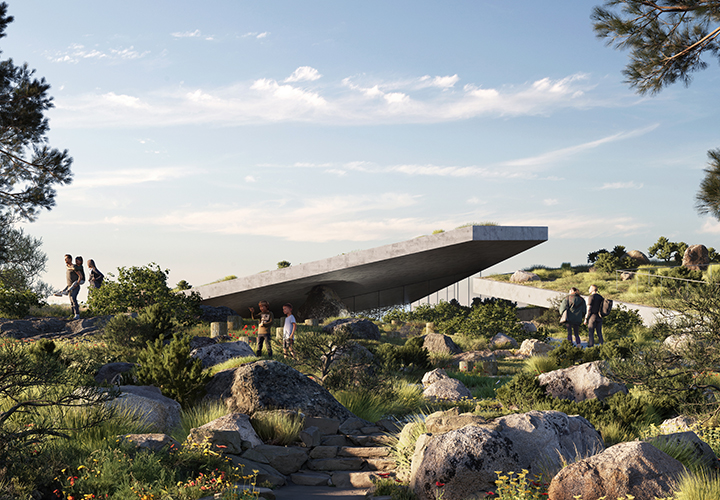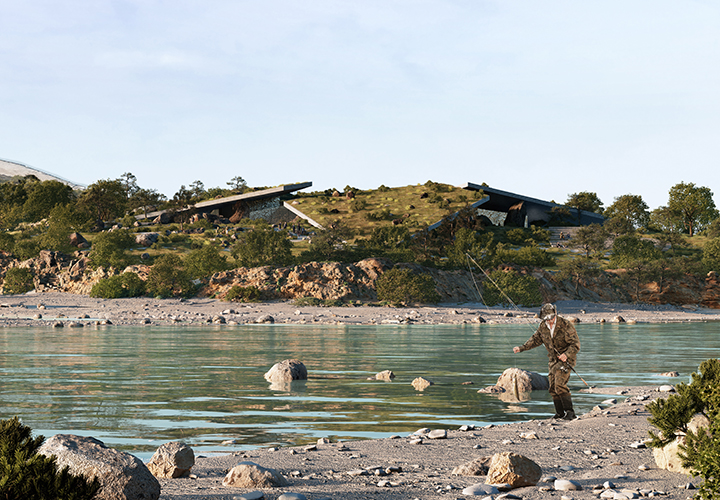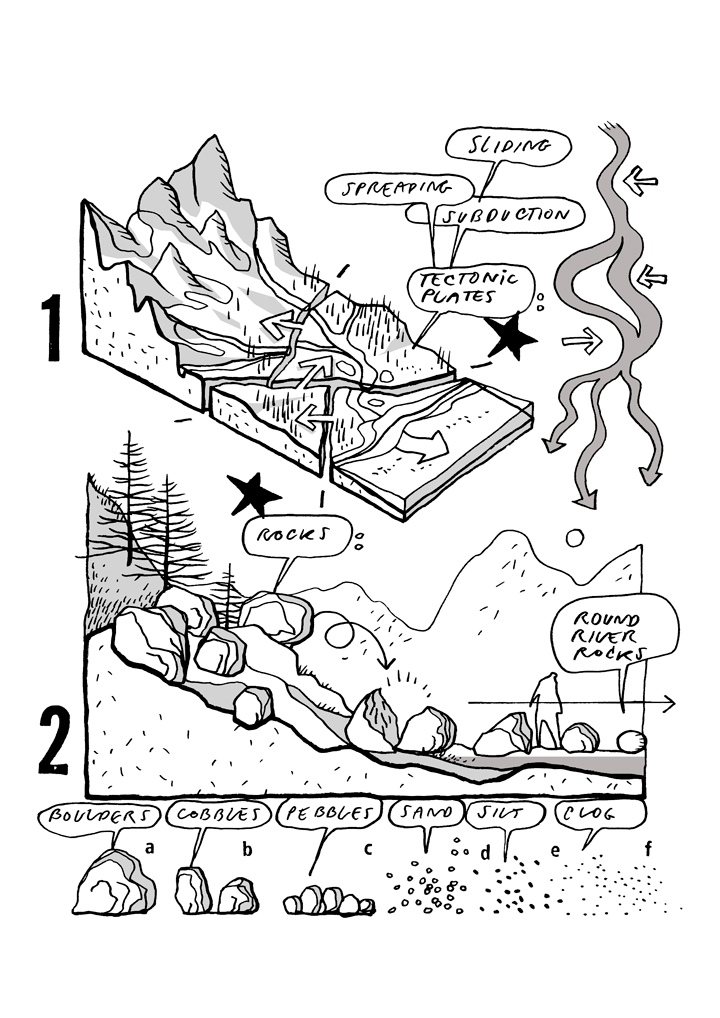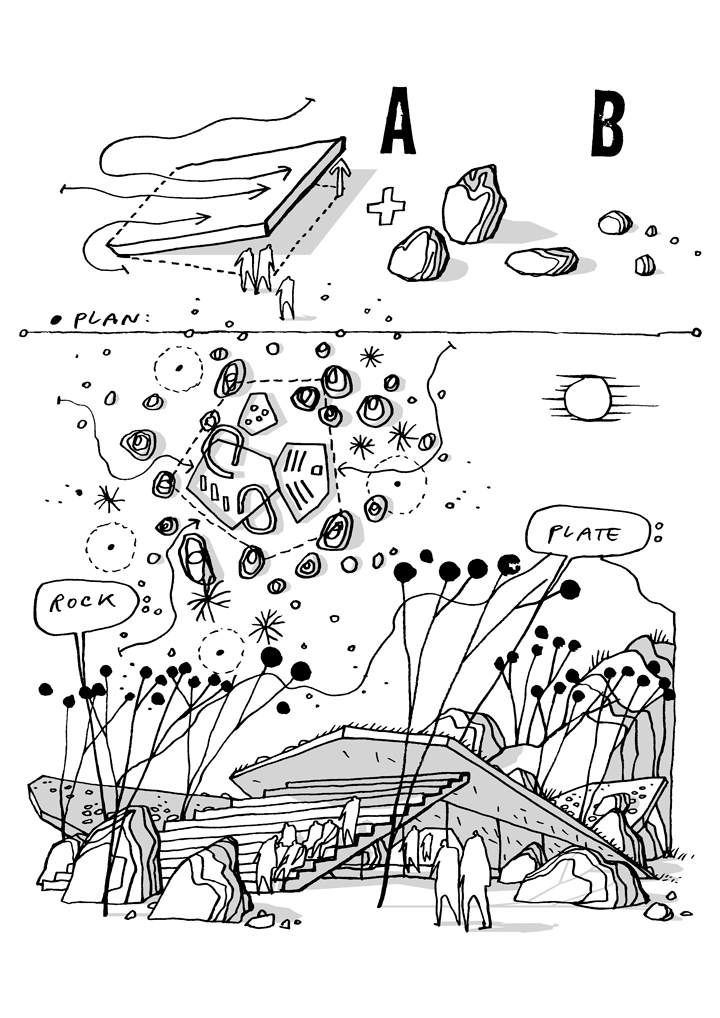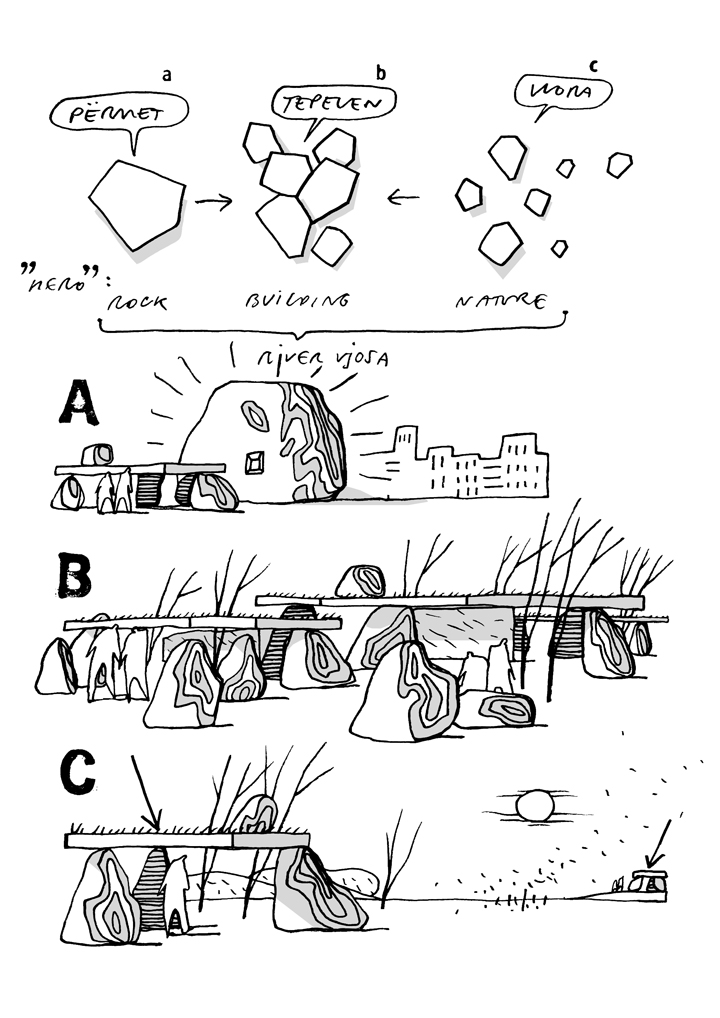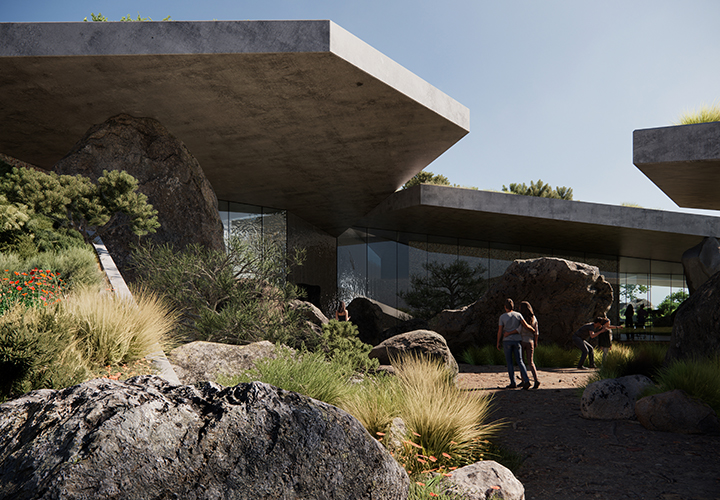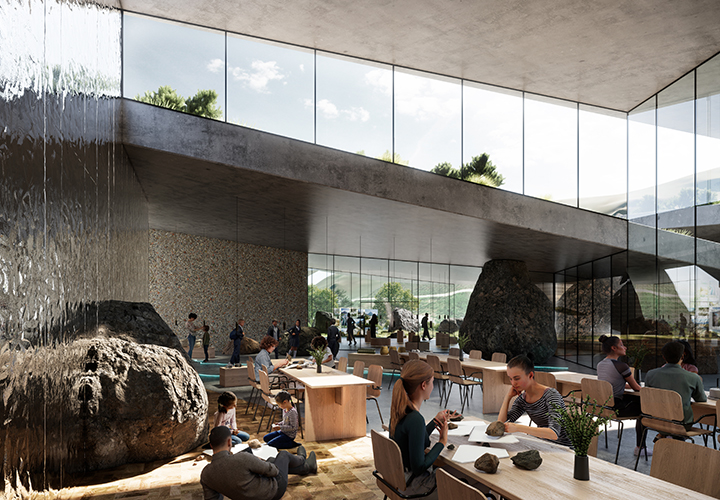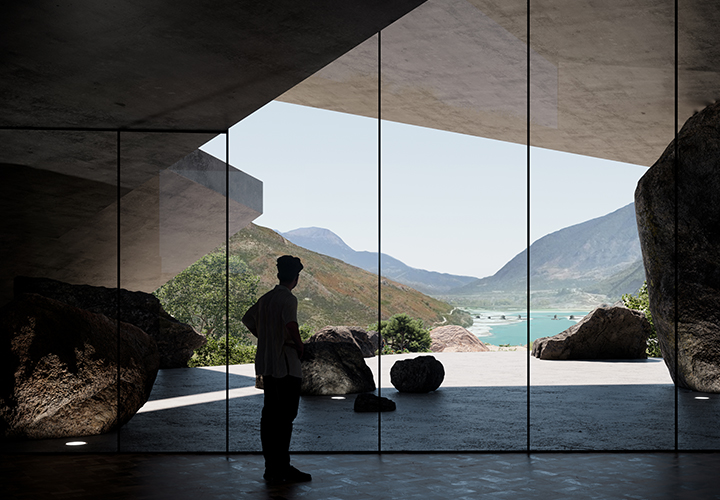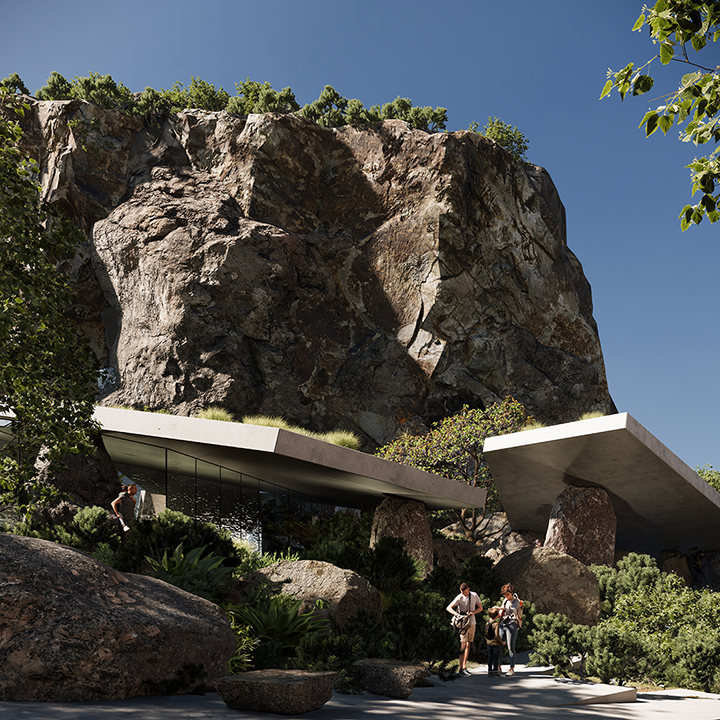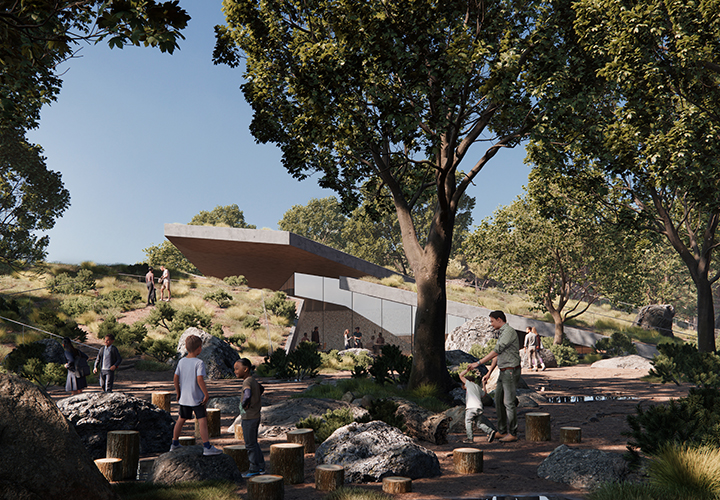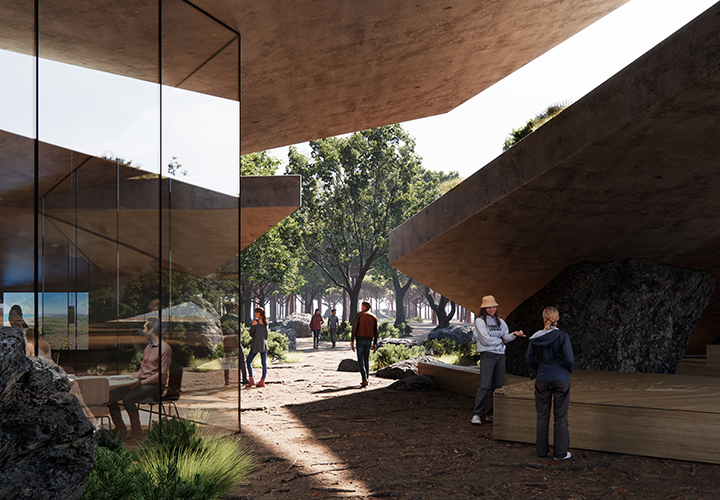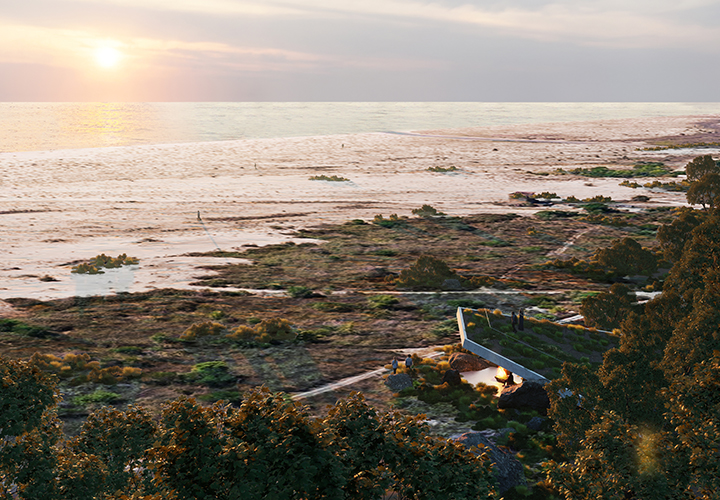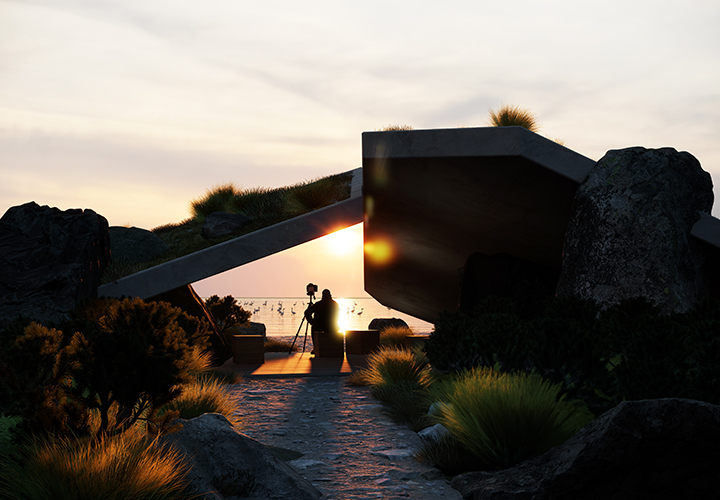VJOSA RIVER VISITOR CENTRE
- LOCATION: TEPELENË, PËRMET, AND VLORË, ALBANIA
- SIZE (TEPELENË VISITOR CENTRE): 1,500 M²
- SIZE (PËRMET INFORMATION STATION): 300 M²
- SIZE (VLORË INFORMATION STATION): 300 M²
- CLIENT: NATIONAL AGENCY OF PROTECTED AREAS (NAPA)
- FUNCTION: MULTIFUNCTIONAL VISITOR CENTRE AND INFORMATION STATIONS
- YEAR: 2023-
- STATUS: ONGOING
- ARCHITECT: CEBRA
- LANDSCAPE ARCHITECT: CEBRA
- LOCAL ARCHITECTS: UNO ARCHITECTS
- ENGINEER: ARUP
- EXHIBITION SPECIALISTS: BARKER LANGHAM
In the wake of the establishment of a nearly 13,000-hectare national park including the Lumi Vjosa, the Albanian government selected CEBRA to design a multifunctional visitor centre in Tepelenë and information stations in Përmet and Vlorë. The newly established Vjosa Wild River National Park marks the first protected wild river in Europe. CEBRA’s three buildings mirror the stormy marriage between soil and water. Referencing the Vranisht dolmen, the key concept simply consists of just two parts: concrete slaps, which resemble tectonic plates that shape the river’s path, and natural rocks, mimicking the submerged stones broken down into pebbles and sand deposited along the riverbanks.
At each site, the architecture merges with the park, providing a distinctive perspective on wild nature in the interior and the landscape design. In and across the buildings, the interior offers a variety of spatial experiences. From controlled, closed areas around the open common spaces and framed views of the river to high ceilings and cave-like spaces.
A place of nature interaction and learning
The project includes efforts to preserve and protect biodiversity and ecosystems. The wild river territory holds around 10,000 animal species and several threatened animal and plant species. Relationally, the buildings and landscape include facilities, which strengthen initiatives to create and share knowledge about the protection of wild nature environments, attracting eco-tourism, locals, schools, and researchers.
The national park has been established with help from outdoor brand Patagonia, environmentalist organisation IUCN, both represented in the jury appointing CEBRA for the task.
Nature and humans meet in Tepelenë
Placed along the river, the Tepelenë Visitor Centre offers a more immersive integration with nature. The interior includes educational spaces, research facilities, exhibition spaces, a community centre, shops, cafés, meeting rooms, offices, and workspaces as well as accommodation for researchers. Outdoor areas allow the indoor functions to spill out into the surroundings, expanding the usable space of the centre, even on rainy days. The centre offers landscape spaces such as a botanical garden, an outdoor stage, a playground, a viewing platform, exhibition spaces, a picnic area, and a promenade extension. Extending the promenade, the ambition is to create a sensory boardwalk or path experience, so you can approach the centre on foot while immersing in the river environment.
Nature is the primary feature in the landscape design and all paths, furniture, and equipment across the sites should be as non-intrusive as possible. As such, in well-thought shapes, a series of stones makes a path, a fallen tree makes the base of a playground, and simple rocks make seating to support the narrative that nature and man are pieces of the same puzzle.
Përmet echoes the values of the Vjosa
Revitalising the existing historical City Stone (Guri i Qytetit), its tunnel and its vacant chamber, which has no functional purpose today, will provide a sensuous auditorium. The underground space will host art installations, concerts, and film presentations that celebrate the vibrant history and nature of Përmet as part of the national park. The central placement in Përmet has the potential to unlock a synergy with the town’s other urban and commercial functions, while still maintaining a close physical connection to the river.
Vlorë goes beyond the shore
The Vlore Information Station is strategically situated away from the immediate vicinity of the Vjosa River. Located near the Narta Lagoon, the station’s educational and exhibition facilities have access to an intersection of diverse landscapes, each distinctly shaped by the river’s ecological impact. The architect-chosen location allows the information station to showcase the far-reaching effects of the Vjosa River on various ecosystems as a life-giving force that extends beyond its banks. As an exceptional example, the lagoon area is the habitat of greater flamingos and Dalmatian pelicans, visible from the station’s panoramic view over the flat lowlands of the delta.
Other cultural projects by CEBRA
Skenderbeu Stadium, Albania
Skamlingsbanken Visitor Centre, Denmark
Al Musalla, UAE
Experimentarium, Denmark

